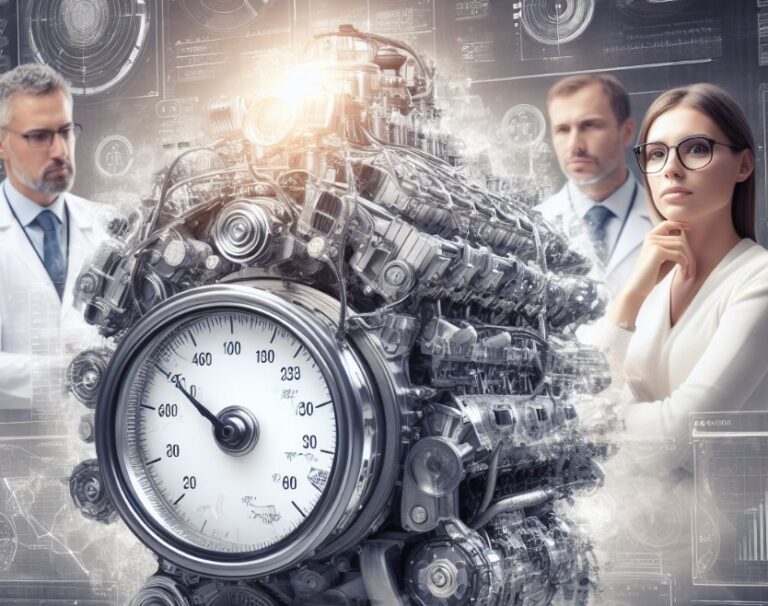Where Are 2 Stroke Engines Banned In US? Quick Answer
Are you looking for Where Are 2 Stroke Engines Banned In US? This question captures the essence of a growing environmental concern. 2 stroke engines, known for their simplicity and power, are facing increased scrutiny. As we delve into the details, we uncover a landscape where these engines are increasingly unwelcome. This shift signifies a critical juncture in our environmental stewardship.
Key Takeaways
- No state-wide bans: No US states have completely banned 2-stroke engines, but many impose stringent regulations.
- California’s strict rules: California leads with stringent emission standards and restrictions on older 2-stroke engines.
- Localized bans: Specific lakes and water systems, like Lake Tahoe, have banned the use of certain 2-stroke engines.
- Environmental impact: 2-stroke engines emit pollutants harmful to water quality and aquatic life.
- Alternatives gaining ground: 4-stroke and electric motors are becoming the preferred choice due to lower emissions.
Where Are 2 Stroke Engines Banned In US?
2-stroke engines are not banned across any US state entirely. However, there are specific regulations and localized bans, particularly on older, more polluting two-stroke engines in certain areas.

For instance, California has stringent regulations on two-stroke engines, and specific lakes such as Lake Tahoe, Mono Lake, and Donner Lake only permit 4-stroke engines or electric motors.
Additionally, certain Colorado River lakes, including Lake Powell, Mead, and Mohave, have banned personal watercraft with carbureted two-stroke engines. These bans and regulations are primarily due to environmental concerns, aiming to protect water quality and reduce air pollution.
The Growing Concern Over 2 Stroke Engines
2 stroke engines, once popular for their power and simplicity, are now under scrutiny for their environmental impact. These engines, particularly older models, are known for higher emissions of harmful pollutants. The shift in perception is largely driven by the growing awareness of environmental protection and sustainability.
The Environmental Impact of 2 Stroke Engines
- Pollution: Emitting hydrocarbons, carbon monoxide, and nitrogen oxides, 2-stroke engines contribute to smog, acid rain, and water pollution.
- Ecosystem Damage: The toxins released can harm aquatic life, disrupt ecosystems, and decrease water quality.
- Health Concerns: Pollutants from these engines pose risks to human health, particularly in areas near water bodies.
States’ Stance on 2 Stroke Engines
No US state has completely banned 2 stroke engines. However, many have implemented regulations, particularly on older models that do not meet modern emission standards.

California’s Regulations
- Emission Standards: California enforces strict emission standards, categorizing engines based on their emission levels.
- Phase-Out of Low-Emission Engines: Older 2-stroke engines with low emission ratings are being phased out.
Other States’ Regulations
- Oregon and Washington: These states have adopted standards requiring new outboards to have either four-stroke motors or direct fuel injection 2 stroke engines.
Localized Bans and Restrictions
While statewide bans are absent, specific regions have imposed their own restrictions.
Lakes Banning 2 Stroke Engines
- Lake Tahoe, Mono Lake, and Donner Lake: These lakes only allow 4-stroke or electric motors.
- Reasons for Bans: The bans are in place to protect water quality, and aquatic life, and reduce air pollution.
City and Town Regulations
- Localized Restrictions: Some towns and cities have introduced restrictions on old 2-stroke boat motors to protect the environment.
- Colorado Reservoirs: Many have banned older, more polluting 2-stroke engines.
Alternatives and Solutions
The shift away from 2 stroke engines is paving the way for more environmentally friendly alternatives.
Embracing Cleaner Technologies
- 4 Stroke Engines and Electric Motors: These alternatives are becoming more popular due to their lower emissions and quieter operation.
Benefits of Switching
- Improved Water Quality: Reduced oil and gasoline runoff lead to cleaner lakes and rivers.
- Wildlife Preservation: Protects aquatic life from harmful pollutants.
- Economic Boost: Clean environments attract tourism and support eco-friendly businesses.
Developments in 2-Stroke Engine Manufacturing
Recent developments in the manufacturing of 2-stroke engines reflect an adaptation to environmental concerns. For instance, the Hirth line of small engines from Germany remains mechanically unchanged in 2023, but there’s a shift in sales and service management in the US.

These engines, offered with various options like different gear ratios and electronic fuel injection, adapt to modern environmental standards. However, costs and shipping have become challenging aspects, with shipping costs nearly tripling. Rotax, another major player, discontinued all 2-stroke engines except the 582 UL, which remains in stock and available for purchase in 2024.
Federal and State Regulations Update
There have been significant updates in US federal and state regulations regarding 2 stroke engines. A notable point is the ban on the sale of new carbureted 2-stroke engines in California, which was adopted as a state law from a federal law. This ban aims to accelerate the reduction in air pollution.
Moreover, California implemented this federal law earlier than required, demonstrating a proactive approach toward environmental protection. The rest of the US followed suit, prohibiting the sale of new carbureted 2-strokes since 2008. Additionally, California implemented more stringent emission limits for outboard engines, surpassing federal standards.
Environmental Policies and the Future of 2 Stroke Engines
In 2022, the US made significant advances in environmental regulations, such as the Inflation Reduction Act, which allocated $369 billion towards climate-change endeavors. California introduced several new environmental measures, including a ban on gasoline-powered cars from 2035 and enhanced wildfire protection programs.

These advancements indicate a growing focus on reducing emissions and promoting sustainable alternatives, which could impact the future use and regulation of 2-stroke engines.
EPA’s Planned Regulations for 2023
The US EPA announced plans to implement tougher greenhouse gas emissions rules for heavy-duty vehicles through at least 2030. These new standards, expected to be finalized by the end of 2023, aim to significantly reduce carbon dioxide emissions from heavy-duty vehicles.
This move aligns with the global effort to reduce greenhouse gas emissions and could potentially influence the regulations surrounding 2 stroke engines.
Can You Still Buy 2-Stroke Outboards In The United States?
Yes, you can still purchase traditional two-stroke outboard motors in the United States, although their availability is becoming limited. Companies like Mercury Marine and Yamaha continue to offer two-stroke outboards, especially outside California where stricter regulations are in place.

BRP, the parent company of Evinrude, remains dedicated to the development of 2-stroke outboard motors, as evidenced by their new series of Evinrude outboards featuring E-TEC G2 direct injection technology.
However, it’s important to note that some manufacturers, like Yamaha and Mercury, have ceased the production of direct injection 2-stroke outboards, shifting their focus to the latest generation 4-strokes which offer comparable weight and advanced digital features.
Are 2-Stroke Boat Motors Legal In Colorado?
In Colorado, particularly on the Colorado River lakes like Powell, Mead, and Mohave, there is a ban on personal watercraft (PWCs) with carbureted two-stroke engines.
This regulation, enforced by the National Park Service, aligns with the 2006 emission standards set by the Environmental Protection Agency (EPA) for two-stroke engines. Boats and PWCs meeting these standards through direct-injection two-stroke or four-stroke engines are exempt from this restriction.

Moreover, there are plans to extend the ban to all two-stroke engines that do not meet the 2006 EPA emission standards. However, in some other areas managed by different federal, state, or local agencies along the Colorado River, two-stroke PWCs may still be allowed, so it’s advised to check local regulations before visiting any specific area.
Are Two-Stroke Boat Motors Banned In Any States?
As of current regulations, no US state has implemented an outright ban on all two-stroke boat motors. However, several states have adopted strict regulations and restrictions, particularly on older two-stroke engines that fail to meet modern emission standards.
California, for instance, has stringent regulations on two-stroke engines. This trend towards stricter environmental regulations has resulted in localized restrictions and a general reduction in the use of older, more polluting two-stroke engines.
For example, the National Park Service has implemented a rule to prohibit carbureted two-stroke engines on certain lakes due to their negative environmental impact, particularly where these lakes supply drinking water, like Lake Mead in Nevada.
Conclusion
To conclude, Where Are 2 Stroke Engines Banned In The US? While there are no sweeping state-wide bans, the trend is clear. Regions across the US are increasingly restricting or banning 2 stroke engines to protect the environment.
This shift, driven by the need for cleaner air and water, highlights the importance of embracing sustainable practices and technologies. The move towards cleaner alternatives like 4-stroke and electric engines not only benefits our environment but also enhances the quality of our recreational water bodies.
Frequently Asked Questions
Is the US Planning Further Regulations on 2-Stroke Engines?
While specific future plans for 2-stroke engine regulations are not clear, the general trend in the US is towards stricter environmental regulations. The EPA’s intention to implement tougher emissions rules for heavy-duty vehicles suggests a continued focus on reducing emissions, which could influence future 2-stroke engine regulations.
What Impact Do 2-Stroke Engine Regulations Have on Water Quality?
The regulations lead to a notable improvement in water quality by reducing oil and gasoline runoff. This helps in preserving aquatic life and maintaining the balance of lake ecosystems.
Are There Any Recent Developments in 2-Stroke Engine Technology?
Recent developments in 2-stroke engine technology focus on adapting to environmental standards. For example, the Hirth line of engines from Germany and the Rotax 582 UL model have made adjustments to meet modern environmental requirements.
How Do 2-Stroke Engine Regulations Affect Air Quality?
Regulations on 2-stroke engines significantly improve air quality by reducing emissions of pollutants like hydrocarbons and nitrogen oxides. This reduction is crucial in mitigating smog formation and improving overall environmental health.

Welcome to the exhilarating world of Matt Rex, a professional car racer turned renowned vehicle enthusiast. Immerse yourself in his captivating blog as he shares heart-pounding adventures, expert reviews, and valuable insights on cars, trucks, jets, and more. Fuel your passion for speed and discover the beauty of vehicles through Matt’s engaging stories and meticulous expertise. Join the ever-growing community of enthusiasts who find inspiration and expert advice in Matt Rex’s blog—a digital hub where the thrill of speed meets the pursuit of knowledge.


![How Many Horsepower Is A 400CC Engine? [Explained]](https://www.turbochaos.com/wp-content/uploads/2023/12/How-Many-Horsepower-Is-A-400CC-Engine-768x506.jpg)




